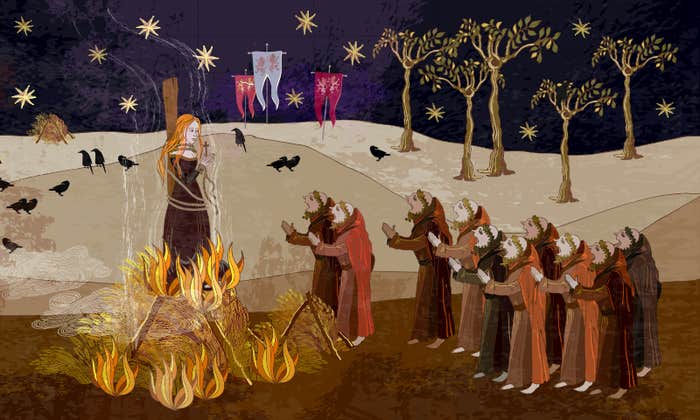In 1864, Rebecca Lee Crumpler became the first Black woman to earn a medical degree in the United States. Over the next 20 years, she provided medical care to countless people in the Black community, first helping former slaves in Virginia, and later tending to the sick in her own private practice in Boston. Most of her patients had few other options for access to healthcare. At the age of 52, she published a book of medical advice. It is the only known medical book written by a 19th-century Black woman.
But few people have heard of Crumpler—or the stories and contributions of so many other Black female physicians, even those who rose to positions of considerable prominence at universities and government agencies. These women have remained hidden in the folds of history, even to contemporary Black female medical students like Jasmine Brown.
I had never met a Black woman physician.
When Brown began to pursue a pre-med track in college, she realized she had never met a Black female physician nor learned about any in school. So she decided to dedicate a two-year Rhodes Scholarship at the University of Oxford to studying the lives and careers of Black female physicians through interviews and oral history archives. The result is Twice as Hard: The Stories of Black Women Who Fought to Become Physicians from the Civil War to the 21st Century. The title of the book is a reference to an old adage in the Black community: to achieve the same kind of professional success as a white person, a Black person must put in twice the effort. Double it again if she is a woman.
The book profiles nine Black female physicians and their stunning achievements amidst overwhelming obstacles—scarce mentors and financial resources, discrimination in schools, and even for those who graduated at the tops of their classes, few employment opportunities. She also describes the personal, political, and scientific events that helped to shape their lives.

While formal rules barring Black women and men from schools and professional institutions have changed, many of the imprints of the centuries of codified oppression remain, even for the country’s best and brightest. Nautilus spoke with Brown, currently a medical student at the University of Pennsylvania, about her experiences and her book, and its connection to the present moment, when racial tensions and violence continue to mount and the Supreme Court is on the eve of a historical decision about the future of affirmative action1.
How did you choose the women you wrote about?
There are so many incredible Black women physicians throughout history, but I wanted to focus on individual stories and give more depth to the storytelling as opposed to telling a bunch of stories at a really surface level. That narrowed my focus a lot because there’s not that much in the archives. I also wanted to choose women who had lived at different points over the past 150 years, to see how their experiences were changing as society was changing. And I wanted to choose women who had retired so that I could show the full arcs of their careers.
Why was having personal details about the women’s lives, their marriages and children, their emotional struggles, important to you?
I got to interview some of the women myself, but a lot of my research was oral histories that I was able to find in archives of different libraries. Some of it was transcribed, but in other cases, I was able to hear their voices as they spoke about their lives. I felt so privileged to be able to dig into these stories, to get to know these women on a deeper emotional level. I really connected with them, saw my own experience reflected there, and I wanted to share that with others.
In a chapter on Dorothy Ferebee, who later became a medical consultant to the Peace Corps and the U.S. State Department, you describe her teaming up with the four other women in her class at Tufts Medical School in the 1920s, all of them white but of different ethnicities. There was a lot of solidarity between them. They studied together and relied on one another to overcome the neglect of their professors and ultimately rose to the top of their class. But you also write that the kind of cross-racial solidarity that Ferebee enjoyed a century ago doesn’t exist today in the field of medicine. What happened?
The premise of me writing this book was that I had noticed that when people talked about Black physicians, they were primarily talking about Black men, and when they talked about women physicians, it was white women. I share identities with both, but I feel like I’m less forgotten or more seen in the Black spaces in general than in women’s spaces. In school, my allies are more often Black men than they are white women. So I haven’t been super involved in organizations that focus on women’s advancement. I tend to have more involvement in groups that focus on advancing Black people. But I don’t think that all hope is lost. I’m friends with a lot of white women. They recognize the additional challenges I experience as a Black woman, and they try to help support me.
“You’re only here because you’re Black.”
One thing that I found kind of stunning to read was that representation of Black people in medicine has stayed basically the same or, by some measures, even declined over the past century or more. You mention, for instance, that while Black physicians were almost exclusively African-Americans before 1960, their numbers fell markedly after that, and today Black physicians are primarily first or second-generation immigrants. You yourself are the only African-American woman in your current medical school class of 160 students.
It was really surprising to see how powerful a few policy changes were—that they really affected representation within medicine for decades. In the late 1800s, when Black men and then later Black women started entering medicine, there was this rise in numbers, but then, with the Flexner Report of 19102 that recommended the closing of so many schools, including so many Black medical schools, the representation dipped and then it just remained stagnant at that level of around 2 percent for almost a hundred years. It is shocking to see that in the early 2000s, with all the discussion that we have around diversity, these numbers remain the same.
What is the connection between your book and the present political moment, between the history of Black women in medicine, and the intense racial division in the United States today, as well as the threat that affirmative action will be overturned by the Supreme Court?
I wonder if after the affirmative action decision comes down, probably in a few months, there will be another significant dip in representation in the field of medicine. Schools are really powerful. I think that if these academic institutions teach more about the history of outstanding Black physicians who have been leaders in the field it could make a difference. Maybe sharing those stories would dampen some of the affirmative action critiques where people say, “Oh, well you’re not good enough, you’re only here because you’re Black.”
Even though I was pre-med and was preparing to apply for medical school when I began this work, I had never met a Black woman physician. And I wasn’t learning about our stories in school. The physicians that I was taught about were almost exclusively white men. But there are so many outstanding Black women in the history of the profession.
I see Black History Month as a catalyst for discussion.
We were talking about intersectionality in terms of gender and race. In high school, someone who I thought was my friend who was a white woman, told me, “Oh yeah, you only get into these schools because you’re Black.” I had basically a 4.0 GPA, multiple AP classes, was varsity athlete president, participated in multiple organizations. But she told me that, and I obviously still remember it to this day. White women have actually benefited the most from affirmative action,3 but at this point, there are more white women in leadership roles in academic spaces than Black individuals, so if affirmative action is overturned, it will hurt Black students a lot more.
Is there anything that gives you hope for positive change in representation of Black women—and men—in the field of medicine?
After learning about these women, I felt really hopeful because I already knew about the bad stuff, the challenges—that was my lived experience. But learning about all the good is what makes me optimistic about my own future and the futures of others. I was also inspired by just how much support I’ve gotten for my work. When I was starting to write this and wanted to get it published, I was worried that nobody would care about it, but I’ve been overwhelmed by the support I’ve gotten across backgrounds—men, women, white, Black. There are allies everywhere. That just shows that there are a lot of people who care and want things to change and who are just looking for direction.
Who do you most hope will read your book?
I had two major target audiences for the book. First, young Black girls, and Black people in general, with the hopes that it will inspire more of them to go into medicine. And then the other group is people within academia, through the entire education pipeline, so that they can gain insight into some of the barriers to better representation in medicine that were established a long time ago and continue today. I’m hoping that these administrators and educators will teach these stories and take action to help address the disparities that persist.
How do you feel about Black History Month? Is the effort to bring a concentrated focus to African-American and Black experience over the course of a single month just another instance of tokenism or does it have real value?
I like Black History Month. I have definitely heard discussion of the idea that if you’re a Black writer, you might only get interest during Black History Month. But we live in a flawed society, so if there wasn’t this dedicated period, I don’t think Black history would be celebrated nearly at the level that it is now. I don’t think that it should be only during February. I see Black History Month as a catalyst for broader discussion. For instance, this conversation about my book is starting during Black History Month, but if that gets the book into more readers’ hands, it can affect the way they think throughout the rest of the year. ![]()
Kristen French is an associate editor at Nautilus.
Lead image: Moremar / Shutterstock
Footnotes
1. Affirmative action was introduced by President John F. Kennedy in 1961. It required organizations that receive federal funding to take action “to ensure that applicants are employed, and that employees are treated during employment, without regard to their race, creed, color, or national origin.” Six years later, in 1967, Lyndon Johnson added sex to that list.
2. Abraham Flexner, author of The Flexner Report of 1910, argued that Black physicians should only treat Black patients, and, as he wrote in the report, “the fewer, the better.” Fourteen Black medical schools or departments were founded in the late 19th century, but only seven survived to the early 20th century. After Flexner’s report, that number tumbled to two: Howard University College of Medicine and Meharry Medical College.
3. Though direct attribution has not been established, the representation of white women in the field of medicine has grown significantly since affirmative action policies were put in place, whereas the representation of Black women has not changed. In 1970, three years after women were written into affirmative action laws, just 7 percent of physicians in America were women. By 2008, white women accounted for 28 percent of physicians, whereas Black women and Black men accounted for only 3 percent each.


























